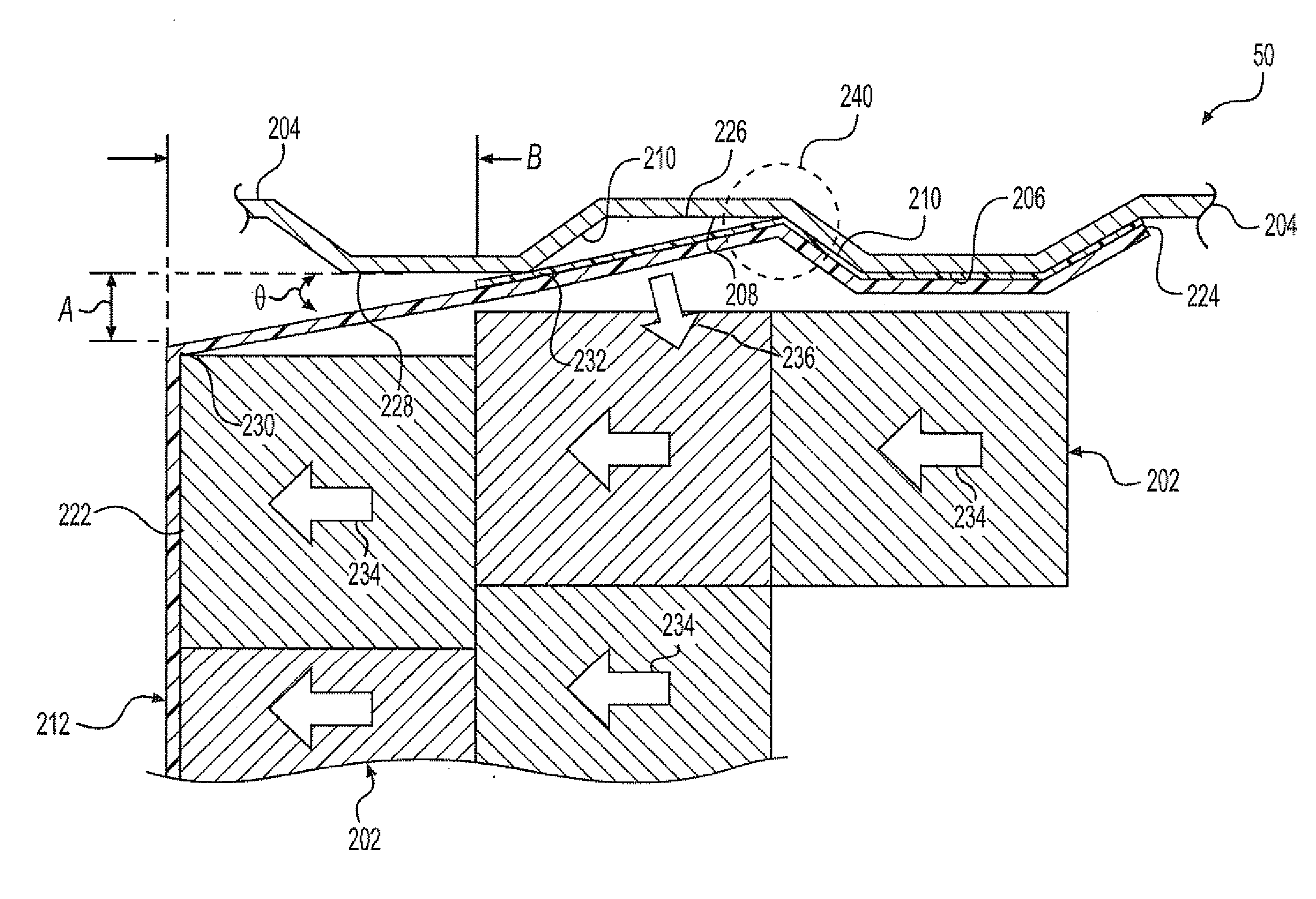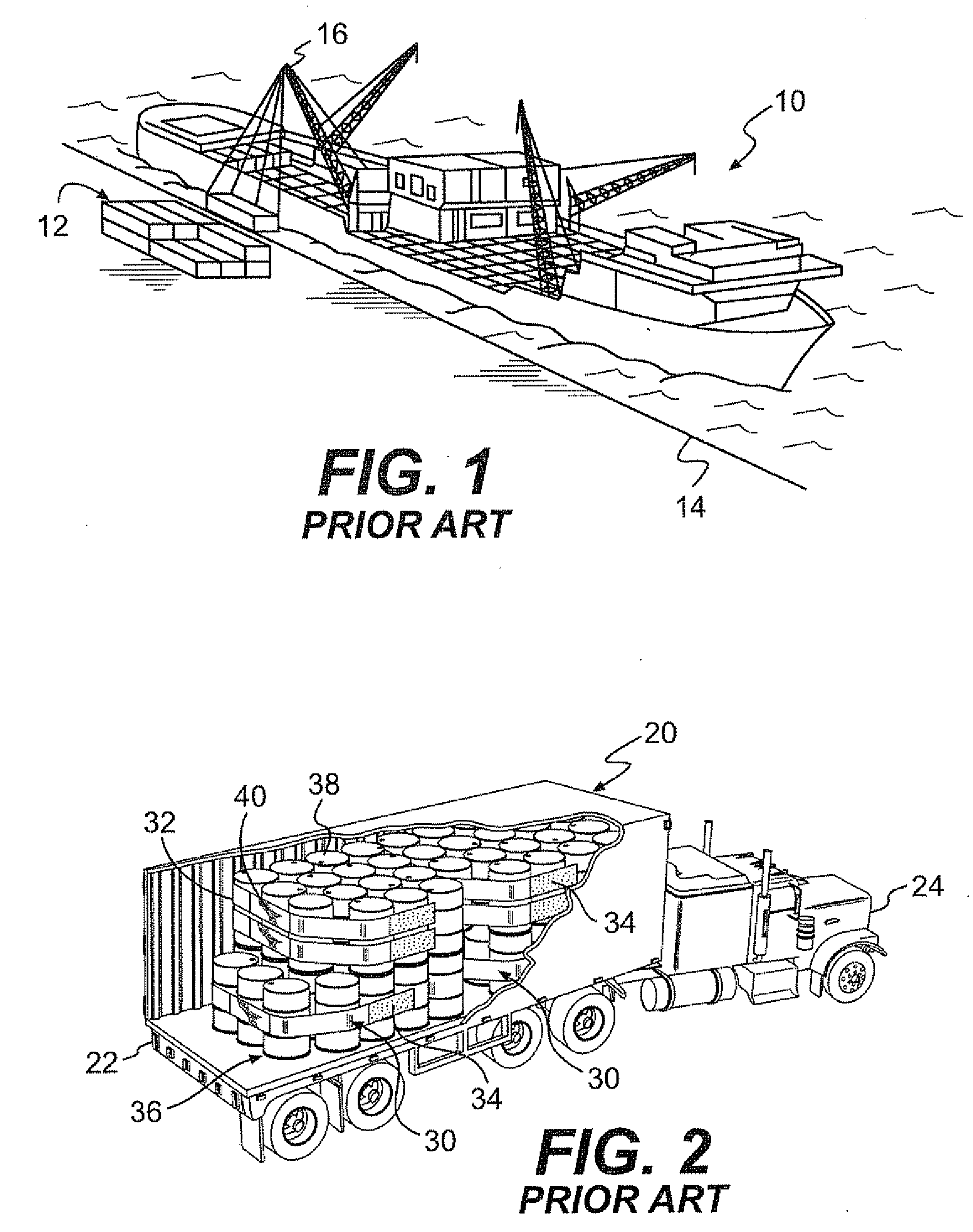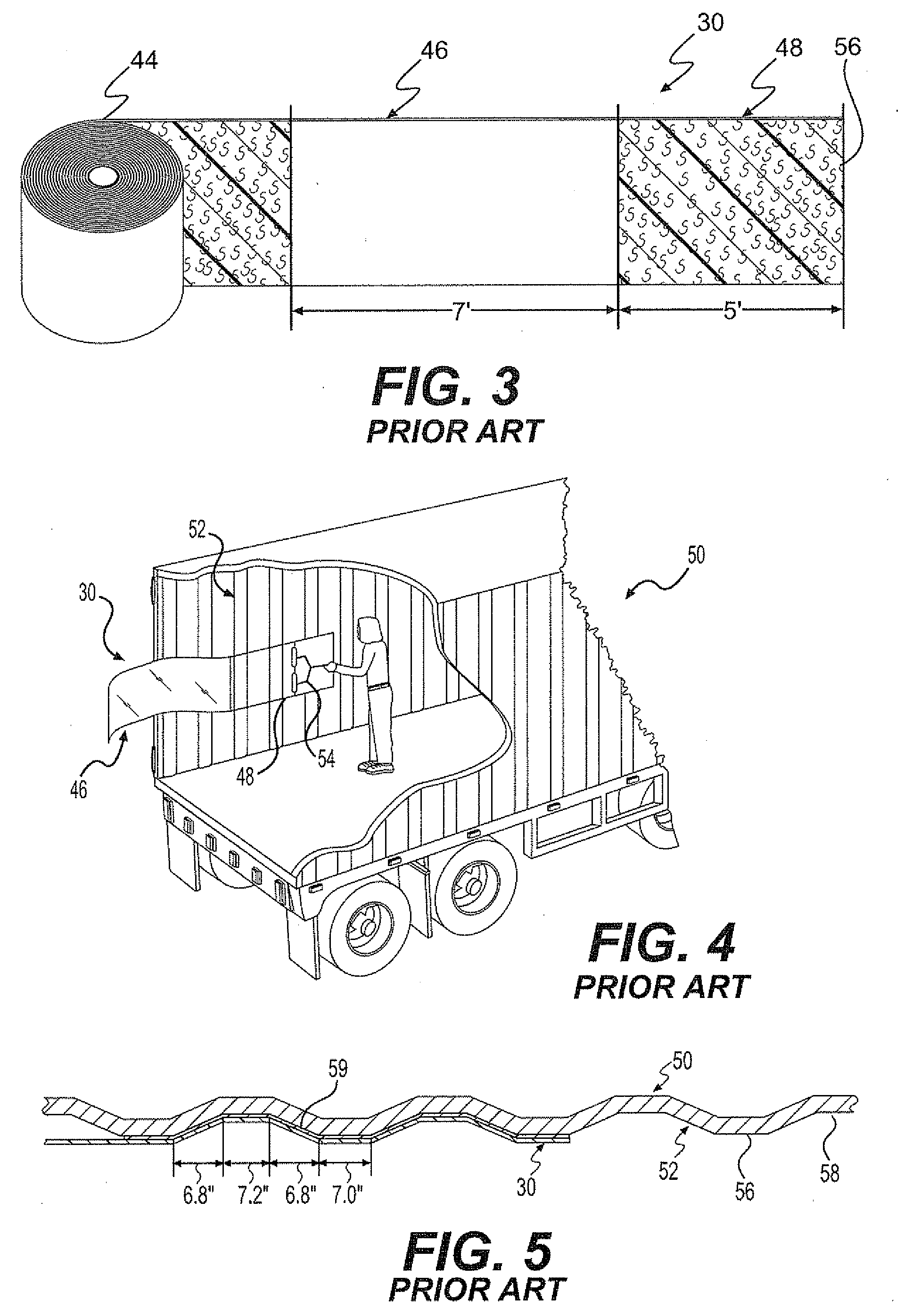Although each containment
enclosure or bundle may be quite heavy and stationary at rest, the
mass of a transport load can produce considerable
momentum force as a result of ship, aircraft, railcar, or
truck changes in motion.
Each of these forces has the potential to apply substantial forces on the contents within the intermodal container.
In the case of large cargo loads, even a small change in velocity or direction can generate substantial forces.
For
air travel, although commercial passenger flights avoid air turbulence, in some instances rough weather is not avoidable.
When a railroad car is rolled into a stationary string of cars, the
impact causes the car couplings to lock together with a jolt.
Moreover, during transport, railway cars are subject to braking forces, run-in and run-out, coupler
impact over grades, rail vibration, dips in the track, and swaying.
In a similar manner trucks are subject to stopping and starting forces, emergency braking, bumps and swaying from uneven road beds, centrifugal forces on curves, vibration, etc. which tend to shift loads.
Such forces can result in damage to cargo, damage to interior walls or
doors of the container, damage to cargo packing, and may create dangerous leaks if the cargo is a hazardous material.
Accordingly, it is undesirable to permit cargo to
gain any
momentum independent of a container during transport.
Each of these previously known systems for securement have limitations associated with construction cost, lack of strength sufficient to secure dense loads, etc.
Moreover, although rear
doors of a
truck trailer may be relied on to at least partially secure non-hazardous materials such as food-stuffs, tissue or soft paper products, furniture, appliances, etc., for hazardous materials, and many other types of loads, the rear
doors of a container may not be used to even partially secure a load.
In this instance it may be impractical to construct wooden front and rear
dunnage sufficient to secure a load where the front of the trailer is not utilized.
Additionally some partial loads are not symmetrically positioned on a
pallet and securement must therefore accommodate an asymmetric load.
This, however, can be a costly,
time consuming, and generally inefficient means of securing a load.
In this, the blocking process requires skilled carpenters and is often outsourced to contractors.
Further wood bracing can be somewhat brittle and subject to failure as a result of an abrupt
impact.
In addition to the above, conventional methods of load-blocking with lumber bracing simply can not perform some tasks.
However, if eighty barrels are loaded there are only approximately four inches between the load face and rear doors of the container.
Four inches is not enough space to put sufficient lumber to brace a load of eighty drums adequately.
Consequently, when wood bracing is utilized as a
system of restraint, shippers are forced to ship containers that are not filled to capacity.
This reduces transport efficiency and increases transportation costs.
Moreover, some types of wood, such as conifer woods, are not acceptable to cross international boundaries without certification of special
fumigation or heat treatment
processing.
In certain instances, conventional load-locking and lumber bracing has not been structurally rugged enough to receive approval to ship hazardous cargo.
Other known means of restraint such as ropes,
metal or plastic straps or stands and the like appearing in the past have tended to exhibit impaired performance and are often not functionally suitable to restrain loads under even moderate conditions.
In addition to this requirement of a separate
adhesive, systems appearing in the past sometimes encounter problems associated with
weakness at the joints.
These corrugations make applying a restraining strip to a separate
adhesive, which may not have an even application, substantially more difficult.
In the past, issues have existed with respect to unacceptable travel of loads which may even come into contact with rear doors of the container during impact.
As noted above, for hazardous loads, load contact with the rear doors of a container is not acceptable according to HazMat regulations.
In addition to the above, other restraining systems known in the past required multiple elements which were cumbersome to store, arduous to install, and often required a degree of skilled labor to properly install.
Systems using straps, nails, anchors, or bolts all require substantial storage space even when not in use.
Furthermore, such systems increase the
safety risk to the workers restraining the cargo.
Still further such systems have often been unable to satisfy safety and travel limits imposed by regulatory bodies in various countries.
Further systems and procedures used in the past relying on accessories located within the
cargo container often were not able to secure a partial load.
That is, if the load does not extend to the front or rear of the container, such as a centrally located load, the necessary anchors may not be available in an area where they can be effectively used.
Systems and methods previously know exhibit a potential for unintended release and / or detachment by peeling of the restraining strip away from a sidewall of a
cargo container during transport even under axial loading of the restraining strips due to an angle that exists between an outer edge of the face of a load and a container side wall and the land and valley undulating surface of a conventional intermodal container side wall surface.
The limitations suggested in the preceding are not intended to be exhaustive but rather are among many which may tend to reduce the effectiveness of cargo restraining systems known in the past.
 Login to View More
Login to View More 


